

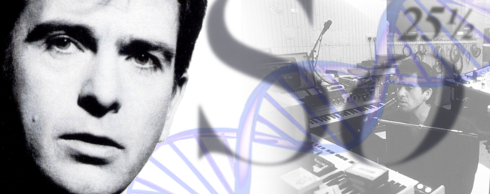
So DNA is nothing more and nothing less than a deep look into how the songs on So evolved. For every single song on the album several development stages have been combined into one more or less consecutive song so that you get to hear four, five, six, sometimes even more stages of each song. This is a most interesting approach which offers a detailed look into the way Peter Gabriel works, and a truly special CD in the So25 deluxe boxset. You begin to understand what it is that keeps Gabriel so occupied when he is recording a song and why it takes him so infinitely song. This is saying something, particularly if you consider that he worked comparatively fast on So.
Three stages
Each song on So DNA moves through three stages. The first is Gabriel alone at the piano, occasionally accompanied by a beatbox. This is when basic compositional structures are worked out, usually without proper lyrics: Gabriel sings half sentences and sounds, a grammelot he styles „Gabrielese“. In the second stage details are worked out. Peter plays piano or synthesizer and is accompanied by Lanois and/or Rhodes on guitar. A rhythm track of various degrees of sophistication may be running along. Some of the musical elements that occur here make it to the final mix. The third stage is where the final arrangement comes together. Various ideas, detours, and developments are tried out and the ideas are steadily condensed.
These three stages are present in most songs on So DNA with at least one sample, sometimes with several samples. It also happens that the tracks switches between two of them. This means that the songs on the album are not illustrated all in the same way – which is good, and probably also a necessity. The tracks on this CD are much longer than the originals on So – hardly any of them are under six minutes long while the longest clocks in at over ten minutes..
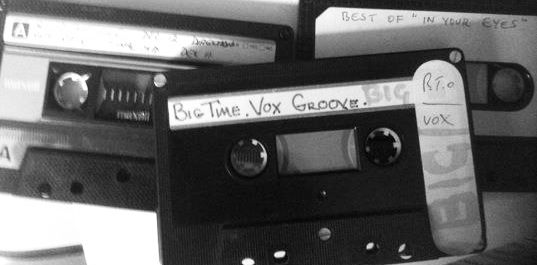
Red Rain
Stage one is a first draft of the melody, rough and unready, but recognizable. No intelligible lyrics. Stage two begins with an outlandish, driving rhythm look. Gabriel sings a long „red rain“, then a deeper, solemn „on a red, red sea“. After a cut a rhythm guitar comes in and Gabriel sings completely unknown lyrics to a completely unknown swinging verse melody „so crazy here, so crazy here – we keep our eyes closed.“ The chorus that follows is more familiar despite the lack of lyrics. A groovy, unknown piano solo is next (is that really Peter?). The sound grows with the next cut and approaches the finished original, though the chorus, which Peter nearly shouts out, is still very different. Underneath we still hear the demo rhythm loop. Here, in the middle of the track, the closing section of the song can be heard in an almost familiar arrangement. It stands for the third stage. The lyrics may be unfinished and more extensive, but it all comes close to the final version: the culminating arrangement and the slower ending. The song fades out, unfortunately. But this first DNA tracks already has much to offer: unknown material, energy, and some parts that are rather interesting..
Sledgehammer
Sledgehammer is an utterly different story. Stage one begins with a dull beat box and piano. PG works on the melody and sings Gabrielese. The phrase he is playing already sounds like the famous brass bit. Stage two brings in organ and some guitar in two different arrangements. The track switches between the two. The verse melody is still a bit different, what lyrics there are cannot be made out, but some elements of the final arrangement are already in place. The familiar bass line and drums come in for stage three. Some bits of the intro theme that would later be used for the maxi version can be heard, followed by the outro with the finished verse „I kicked the habit, shed my skin...“ The horn section is there as well as other elements along with a bit of whistling. It all still has beta demo quality. Less magic than Red Rain, but more rhythm work. The track ends after six and a half minutes without the word „Sledgehammer“ having been mentioned a single time.
Don't Give Up
A hard beginning in stage one with PG singing Gabrielese over synth strings. You hear the odd „cloud“ and „sky“ but there is not much sense in it really. Another synth part follows, and PG sings what would later be Kate Bush's part „don't give up now, you still have us“ in the familiar register, albeit with varieties in the lyrics and differences in the melody. Stage two adds an electric guitar with a rhythmic groove, which would later be dropped again, while PG tries out melodies. Stage three begins with „moved on to another town“. The arrangement is almost finished. Kate Bush can be heard, and there are backing vocals with lots of echo. Towards the end the familiar bass riff from the outro can be heard along with some vocal and synth experiments that continue until the song fades out.
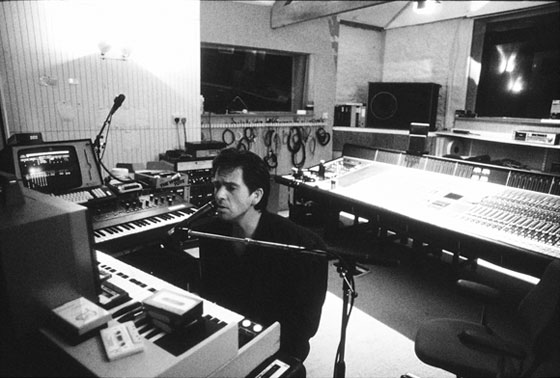
That Voice Again
Stage one: „Just wanna talk to you, with nothing in the way“, PG solo on the e-piano. The magic is there instantly. The next line brings in part of the melodic structure of the song, discernible but still different. This beginning ends suddenly in echoes... Restart, stage two: guitars, piano, drum patterns. Peter whistles and sings unintelligible things. The introductory chords can be heard for stage three with synth bass and guitars. The verse melody is there, but the lyrics are still Gabrielese. The bridge sounds quite familiar. Peter keeps experimenting with the lyrics: „nobody cares that I'm coming in peace“, „everything that doesn't fit can quickly be removed“ (how apt for this DNA project), „got no justice, got no case, nothing to defend“ - good to hear these early lyrics. Then another demo, partly with the final production. Here is the real surprise, for suddenly there is the voice of Youssou N'Dour! Then the familiar coda of „what I carry in my heart...“ with a chorus that is almost like the album version. Lyrics and melody have been completed as, alas, the DNA version ends.
Mercy Street
The evolution of Mercy Street is a steady one, albeit with one big rupture. Gabriel sings a familiar melody with unfinished or varied lyrics („looking down on city streets“). Stage two brings in an energetic synth bass, familiar samples, a bit guitar, and percussions. This makes Mercy Street an up-tempo song that illustrates why Peter called Don't Break This Rhythm the beta version of Mercy Street. All this suddenly ends in echoes. Stage three begins in a very different mood, smaller and more familiar. There is the familiar keyboard effect and an unknown saxophone. Towards the end there is a big closing section that finally includes the significant triangle loop. The piano is a bit louder here, though it all is very close to the album version.
Big Time
It all starts with loud, groovy piano and a ticking drum machine. No vocals. This must be the very first idea, and it is hard to see Big Time in this. Suddenly there is a big jump to a much more developed version with drums. Work is going on in the verses, but there are no real lyrics yet, and the melody is quite unfinished. What is there is the funky (synth) bass. As the track progresses various arrangements are tried out: Synth horns, jazz organ, percussions, female backing voices, all still very much as a demo. Four minutes into the song there is an almost finished version. Just a few instruments are still sampled and here and there different pieces are stressed. This DNA version has a groove almost throughout the whole track, and many experimental bits whirling around.
We Do What We're Told
Dramatic piano chords, PG whimpers tunes – We Do What We're Told begins as a much darker song than the album version. After some ninety seconds stage one moves into the „we do“ vocals and sampled guitars that fade into echoes. Restart for stage two with strong chords on the electric guitar and the familiar introduction. Weighty drums come in and the arrangement begins to sound familiar. Three minutes into the song Bowie-style vocals can he heard, far more dramatic than on the album. „We do what we're told“ meets a response of „yes we do“, wild exalted cries in the background and sound effects can be heard. The track finally fades out without the „one doubt“ coda. This DNA version is probably best suited to be listened to repeatedly as a whole song.
This Is The Picture
This is the DNA version with the least experiments, probably because all there was to do was to work on a finished song. After an ethereal voice sample a funky rhythm section comes in. The vocals are close to the album version. There is a switch towards a less rhythmic version that is closer to the final mix and contains some hesitant sound experiments. The track switches two or three times between these version as the song moves towards the coda. The track ends very abruptly.
In Your Eyes
At over ten minutes' length the DNA of In Your Eyes is not quite the most detailed but the longest version. It begins with a familiar percussion loop including guitars and bass overdubs obviously a preproduced backing track for developing the arrangement. This soon changes as we hear real drums and the voice of Youssou N'Dour. Everything suddenly ends in echoes and the track switches to something completely different, an early vocal version with Peter on the piano. There are vaguely familiar melodies for Gabrielese vocals. After a restart a more detailed version, lots of gentle percussion, the lyrics are complete, the chorus arrangement nearly finished. Around five minutes into the song there is an unknown bit „look around, I don't like all the things I see“ and „so much pain, so many people who want to live free“. This is more like a familiar demo. The track switches back to an almost finished version. Many vocals experiments in the chorus, before it is reduced to a simpler version based mainly on piano and synth. Unknown lyrics and melodies that boil down more and more to piano and the voice of PG with which So DNA ends.
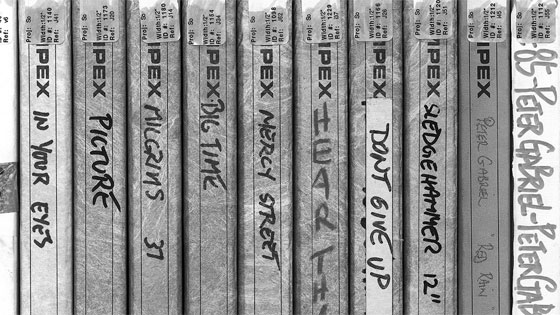
All in all...
Some people were sceptival: Can this work? Would it not have been better to do it like U2 who simply released a full album with early versions of the songs? No, So DNA is a most exciting piece of art that tells the story of how Peter Gabriel works. Not only does it document the three stages of song-writing, it also shows how much Gabriel experiments, tries out thing, expands on this, drops that and simply does not relent. Many songs sound a bit clumsy at times, some completely different, and some elements could have been good in the dinal version. But, of course, we have So DNA now. Considering we are only getting to hear a tiny little bit here this is all the more remarkable.
This is a gem, an important part of musical history. It is part of a boxset that has been put together in a peculiar fashion, but it is unique. Peter Gabriel, we want more of this! The DNA of the other albums must be decoded. „So“ there...


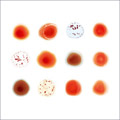

Double-CD with both, Scratch My Back and ... And I'll Scratch Yours in digipak format
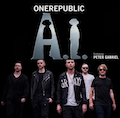

Collaboration between Peter Gabriel and OneRepublic from 2016